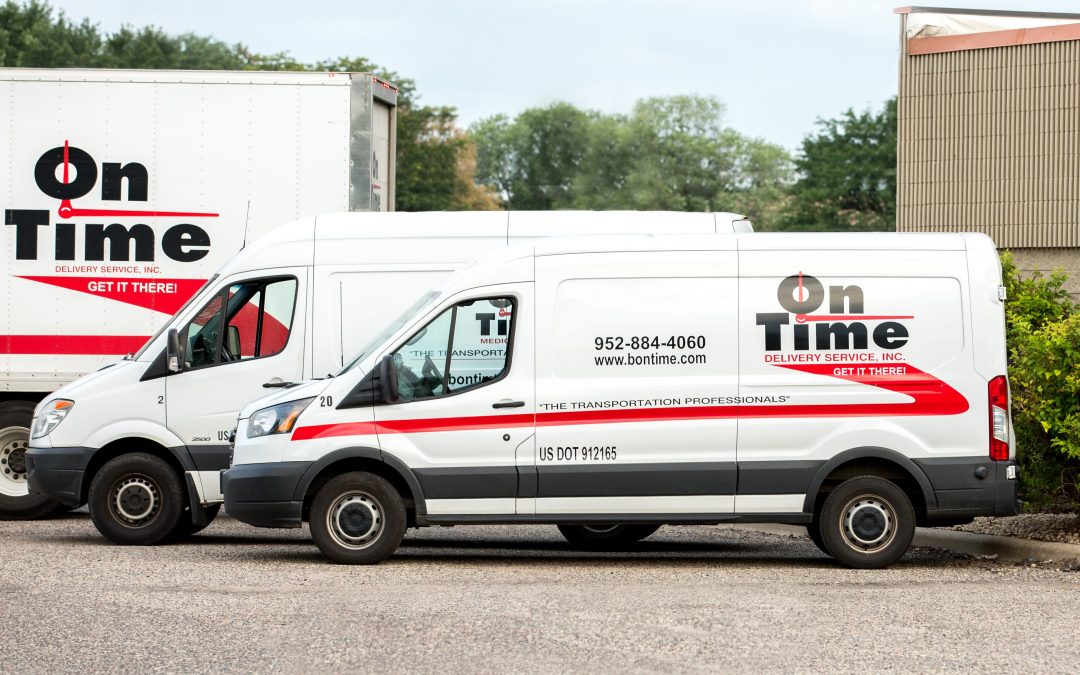




Oil
Every driver should be checking the oil on your car or truck. The problem comes when we have to remember to check the oil. There have been some times where I haven’t checked my oil at all, and instead, have gone to get an oil change because it’s probably time. It is recommended to check your oil every week to every other week, especially if you are driving for work.
The common things to look for are the level and color of the oil. The levels should be in between two dots noted on the dipstick, and the color should be gold instead of black. For cars and vans, a typical oil change should be after 3,000 to 5,000 miles. For dock trucks, you’ll want to get an oil change after around 7,000 to 8,000 miles.
Coolant
Out of the types of vehicles you can drive with us, the dock trucks use the most coolant. Its large engine creates a lot of heat, making checking the coolant one of the most important things to do. You’ll always want coolant filled no matter which vehicle you drive. Checking the levels every week, especially if you drove a lot in one particular week, is important to keeping your car or truck running for a long time.
Brake and Steering Fluids
Being able to brake and steer is a little important to drive… Okay, it’s very important. After all, you can’t drive a vehicle if you can’t stop or steer it. While these fluids don’t need to be changed often, you’ll want to check the levels every month to make sure your car or truck is operating safely.
Be sure to check your vehicle’s manual if there is a recommended mileage to change out either fluid. Otherwise, it is recommended to change your steering fluid around every 75,000 miles, when it gets very dark in color, or when it leaks. If it does start leaking, be sure to get the leak fixed before it causes damage to any other parts in the engine.
For brake fluid, it usually should be changed every other year or every 30,000 to 45,000 miles. Again, for brake fluid, it needs to be fixed if there is a leak before any other damage comes to the vehicle’s engine. Brake fluid is corrosive and could do a lot of damage to your vehicle.
Brake Pads
Another part of the brakes you’ll need to check is the brake pads. A squeaky brake is never a good brake, especially when you drive a lot. It’s annoying, and it’s not good for your vehicle. Regularly checking your brakes or getting them checked with your oil change is a good way to make sure you are safe on the roads.
Tires
There are a couple of things to check when looking over your tires for maintenance checks. The tire pressure is one of them. A flat tire not only damages the hub, but it can throw off the alignment of the car. A dock truck’s tire pressure should be higher than a car’s tire pressure. The difference is the weight of the vehicle and type of tire. Check with your tire provider to see what psi you need for your tires and vehicle.
You should also check the tire treads when looking over your tires. Treads help keep you from sliding on the roads, which is especially helpful in the winter. It is recommended to check the tire treads every month.
The last thing you need to do with your tires is to check the alignment with your wheels. If the alignment is off with your vehicle, you could be leaning to the left or right. This could also cause other damages to the framing and undercarriage of your car or truck. Get this checked with your oil change and rotate your tires when needed. The heavier the vehicle, the more often you’ll need to rotate your tires.
Lights
The lights on your car are checked with every professional oil change, and that’s for good reason. We all wish we could see in the dark, and it’s unfortunate that we can’t. This is especially unfortunate during the winter when it gets dark earlier in the day. Every month, you’ll want to check all of the lights. This includes the headlights, brights, turn signals, brake lights, and reverse lights. Burnt out lights don’t just give you difficulty, but they could also confuse the people around you.
Air Filter
In most cars and trucks, there are two different air filters. One provides you with clean air in the cabin, while the other filters out dirt and dust from going into the engine. The most important filter, for your engine’s health, is the one that protects your engine from dirt, dust, and other things that get stuck in your engine and damage it. It’s recommended to check it every month but replace it every year or every 12,000 to 15,000 miles, if needed.
One of the best ways to care for your car or truck is to schedule time to look over every part of your vehicle every month. Keep yourself safe out on the roads! Winter is a difficult time for drivers, and we appreciate everything our drivers do to get packages and other items where they need to go.
Learn more about what it’s like to drive for On Time!
https://davidsheavyduty.com/9-essential-maintenance-checks-for-your-semi-truck/
https://www.tafs.com/semi-truck-maintenance/
https://matrackinc.com/preventative-maintenance-for-semi-trucks/
https://www.bridgestonetire.com/learn/maintenance/ultimate-car-maintenance-checklist/#
https://www.insurancehotline.com/resources/10-important-things-you-should-check-on-your-car-regularly/
https://carro.sg/blog/6-important-things-check-car-regularly/
https://www.rac.co.uk/drive/advice/know-how/regular-car-checks/


